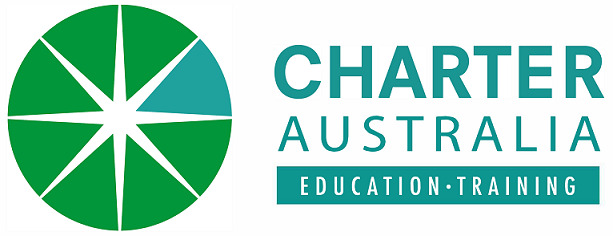Revision Date: 19 June 2022 by Charter Australia
Policy
In accordance with the requirements of the Standards for NVR Registered Training Organisations, Charter Australia provides the opportunity for students to apply to have prior learning recognised toward a qualification or units of competence for which they are enrolled.
Recognition generally takes two forms: recognition of prior learning, which is the focus of this policy, and credit transfer, which is dealt with in the Credit Transfer section of this manual. For the purposes of this policy, recognition of prior learning will be referred to simply as recognition.
What is recognition?
Recognition involves the assessment of previously unrecognised skills and knowledge an individual has achieved outside the formal education and training system. Recognition assesses this unrecognised learning against the requirements of a unit of competence, in respect of both entry requirements and outcomes to be achieved. By removing the need for duplication of learning, recognition encourages an individual to continue upgrading their skills and knowledge through structured education and training towards formal qualifications and improved employment outcomes.[1] This has benefits for the individual and industry. Most importantly, it should be noted that recognition is just another form of assessment and requires the same application of the Company’s assessment policy and procedures.
Recognition guidelines
The following guidelines are to be followed when an application for recognition is received:
- Any student is entitled to apply for recognition in a course or qualification in which they are currently enrolled.
- Students may not apply for recognition for units of competence or qualification that are not included in Charter Australia’s scope of registration.
- Whilst students may apply for recognition at any time, they are encouraged to apply before commencing a training program. This will reduce unnecessary training and guide the student down a more efficient path to competence.
- Students who are currently enrolled in a training program are eligible to apply for recognition in that program at no additional charge.
- Assessment via recognition is to apply the principles of assessment and the rules of evidence.
- Recognition may only be awarded for whole units of competence.
Forms of evidence
- Sufficient,
- Valid,
- Authentic, and
- Current
- Work records;
- Records of workplace training;
- Assessments of current skills;
- Assessments of current knowledge;
- Third-party reports from current and previous supervisors or managers;
- Evidence of relevant unpaid or volunteer experience;
- Examples of work products;
- Observation by an assessor in the workplace;
- Performance appraisal; or
- Duty statements.
International Students
Appealing recognition outcomes
Procedure
|
Step 1 Provide sufficient information to candidates to inform them of opportunities for alternative pathways via recognition and the recognition process. |
Step 1 Inform students about the opportunity for recognition (This must include prior to enrolment.) |
|---|---|
| Step 2 Candidates who request recognition of their current competence are to be invited to carry out a self-assessment to determine their suitability for a recognition application (using the Recognition Self-Assessment Guide). This step is not compulsory but is strongly suggested. The candidate should be provided with an electronic version of the RPL application documents. | Step 2 Undertake self-assessment. |
| Step 3 Undertake a recognition assessment planning interview between the assessor and the candidate (using the Recognition Assessment Plan). This is to include, where possible: 3.1 Helping the candidate to identify appropriate forms of evidence; 3.2 Guiding the candidate on the use of recognition tools, and 3.3 Informing the candidate about the assessment process. | Step 3 Enrol in the course. Undertake recognition assessment planning interview. |
| Step 4 Students to compile their recognition submission (using a Recognition Evidence Report). This form allows students to record their particular documentary evidence against each unit of competence and to attach this evidence as required. | Step 4 Prepare and submit recognition evidence. |
| Step 5 The Assessor is then to review the assessment evidence and decide on the need for additional evidence on perceived gaps. The Assessor may invite the candidate to undertake a recognition interview to answer verbal questions or a practical assessment. At the end of the evidence-gathering process, the Assessor is to provide the candidate with written feedback regarding the assessment outcomes, including the procedure for the candidate to appeal the assessment outcome. | Step 5 The Assessor reviews recognition evidence and provides feedback to the candidate. May include: documentary evidence, verbal questions, practical assessment |
| Step 6 If the student is not satisfied with the outcomes of a recognition application, they may appeal the outcome like other assessment decisions. Further information on the appeals process can be found in the Student Information Booklet or policy and procedure manual. | Step 6 The student may appeal the assessment decision if they are not satisfied. |
| Step 7 When all assessment and appeal processes have concluded, the assessment outcome is to be recorded in the recognition register and issued the candidate with written advice of the outcome. This may include issuing statements of attainment or qualifications awarded through recognition in accordance with Charter Australia Qualifications Issuance policies and procedures. | Step 7 The student is provided with written confirmation of the assessment outcome. |
